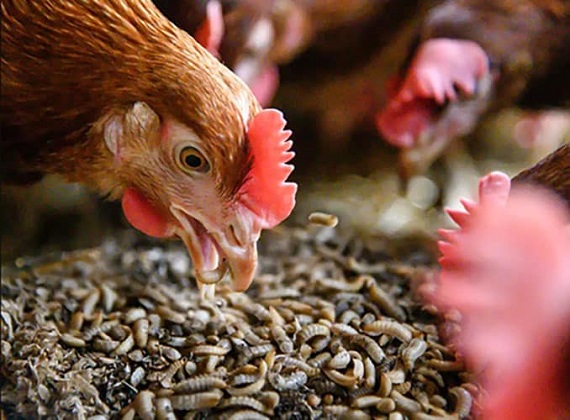- هذا الموضوع فارغ.
- الكاتبالمشاركات
- أبريل 7, 2025 الساعة 11:42 ص #622990

Optimizing feed management is essential for maximizing poultry growth and production. As feed accounts for a significant portion of production costs in poultry farming, effective feed strategies can lead to better growth rates, improved feed efficiency, and enhanced profitability.
By using advanced feeding techniques, balancing nutrient content, and employing innovative technologies, poultry farmers can ensure that their birds receive the right nutrients at the right time.
A well-optimized feed management strategy not only improves the health and productivity of poultry but also contributes to more sustainable and cost-effective farming practices.
1. Balancing Nutrients for Optimal Growth and Health
One of the core components of optimizing feed management is ensuring that poultry receive a balanced diet that meets their specific nutritional requirements. This includes providing the right proportions of proteins, carbohydrates, fats, vitamins, and minerals that are essential for healthy growth and development.
Protein is particularly important for muscle development, while carbohydrates and fats serve as energy sources. A well-balanced diet helps birds grow at an optimal rate, reduces the risk of metabolic disorders, and ensures that they reach market weight in a shorter time frame.
Regularly assessing and adjusting feed formulations based on the birds’ age, breed, and production goals is crucial for maintaining optimal health and performance.
2. Implementing Feed Efficiency Strategies
Feed efficiency is a critical factor in optimizing poultry growth and production. It refers to the amount of feed required for birds to gain a specific amount of weight, with the goal of minimizing feed waste and maximizing growth.
By closely monitoring feed intake and growth patterns, poultry farmers can make adjustments to feeding practices to improve feed conversion ratios. Strategies such as offering the right feed types at different growth stages, using feed additives, and ensuring proper feeding schedules can help enhance feed efficiency.
Additionally, adopting precision feeding technologies, such as automatic feeders or feeders with sensors, ensures that birds receive the appropriate amount of feed, reducing overfeeding and underfeeding while optimizing production.
3. Using Alternative Feed Ingredients for Cost Reduction
In many regions, the cost of traditional feed ingredients such as corn and soybean meal can be prohibitive. To optimize feed management and reduce costs, poultry farmers are increasingly turning to alternative feed ingredients.
These can include locally sourced by-products, such as rice bran, cassava, or even insect meal, which can provide essential nutrients at a lower cost.
Incorporating these alternative ingredients not only reduces feed costs but can also contribute to more sustainable poultry farming by utilizing locally available resources.
However, it is essential to carefully balance these alternative ingredients to ensure that the nutritional requirements of the poultry are still met and that feed quality remains consistent.
4. Managing Feed Storage and Handling Practices
Proper feed storage and handling are vital aspects of feed management that directly impact the quality and efficiency of poultry production.
Poorly stored feed can lead to spoilage, contamination, and nutrient degradation, which negatively affect poultry health and growth. To optimize feed quality, it is essential to store feed in cool, dry, and pest-free environments to prevent spoilage and maintain its nutritional value.
Implementing effective handling practices, such as using clean equipment and avoiding feed contamination, ensures that poultry receive high-quality feed at all times. Additionally, rotating feed stocks and using proper feeding techniques to minimize waste further enhances feed management.
5. Leveraging Technology for Precision Feeding
The advent of technology has brought about new possibilities for optimizing feed management in poultry farming.
Precision feeding technologies, such as automated feeding systems, weigh scales, and digital monitoring tools, allow farmers to closely monitor and adjust feed intake based on real-time data. These systems can track factors such as bird weight, feed consumption, and growth patterns, providing valuable insights that enable more accurate and efficient feeding practices.
The use of data analytics can help optimize feed formulations, predict growth rates, and adjust feeding schedules to align with production goals. Leveraging these technologies not only enhances poultry growth and production but also reduces waste and costs, leading to more sustainable and profitable farming practices.
In conclusion, optimizing feed management is essential for enhancing poultry growth and production. By balancing nutrients, improving feed efficiency, using alternative feed ingredients, and incorporating advanced technology, poultry farmers can significantly improve their operations.
Effective feed management not only enhances the health and productivity of poultry but also contributes to reducing costs, increasing profitability, and promoting sustainable farming practices.
As the poultry industry continues to grow, adopting innovative feed management strategies will be key to meeting the increasing demand for poultry products while ensuring long-term success for farmers.
- الكاتبالمشاركات
- يجب تسجيل الدخول للرد على هذا الموضوع.

